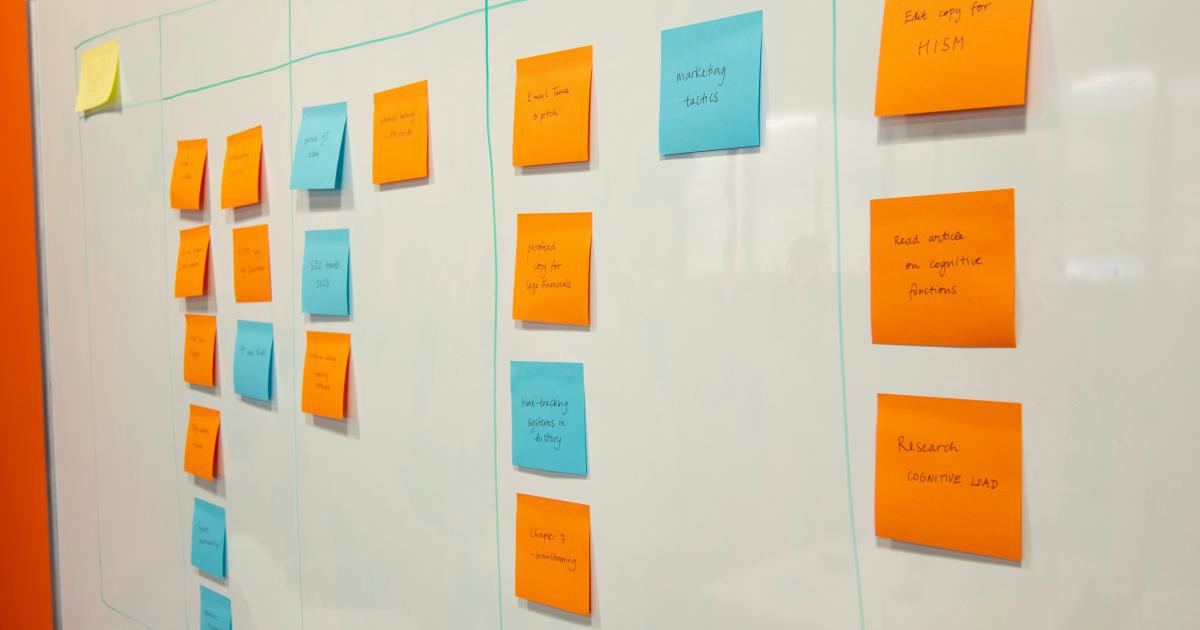Optimize Funnels with A/B Testing Multi-Step Forms


Unlocking the Power of A/B Testing for Multi-Step Forms
In the dynamic world of digital marketing, optimizing conversions is a constant challenge. One key battleground where marketers can gain a competitive edge is in the optimization of lead generation funnels. At the heart of these funnels often lie multi-step forms - powerful tools that can drive valuable conversions, but only when meticulously crafted and optimized.

Enter A/B testing - the strategic process of comparing multiple versions of a web page or form to determine which performs better. By leveraging A/B testing, marketers can unlock the full potential of their multi-step forms, refining and enhancing them to maximize conversion rates.
In this comprehensive guide, we'll dive deep into the world of A/B testing for multi-step forms, exploring the benefits, best practices, and step-by-step strategies to help you optimize your lead generation funnels and drive sustainable business growth.
Understanding the Power of Multi-Step Forms
Multi-step forms are a powerful tool in the marketer's arsenal, offering a number of distinct advantages over traditional single-step forms:
Improved User Experience
By breaking down the form into smaller, more manageable steps, multi-step forms provide a more user-friendly experience. This can help reduce form abandonment rates, as users are less likely to be overwhelmed by a long, daunting form.

Increased Data Collection
Multi-step forms allow you to collect information in a more gradual and conversational manner. This can result in higher-quality lead data, as users are more willing to provide information in a step-by-step process.
Targeted Messaging
Each step of a multi-step form presents an opportunity to tailor the messaging and call-to-action (CTA) to the user's current stage in the funnel. This personalized approach can improve engagement and drive higher conversion rates.
Reduced Cognitive Load
By breaking down the form into smaller, more manageable steps, multi-step forms can help reduce the cognitive load on users, making it easier for them to complete the form.
Optimization Opportunities
The step-by-step nature of multi-step forms provides ample opportunities for A/B testing and optimization, allowing you to fine-tune each element to drive maximum conversions.
Increased Conversion Rates
Numerous studies have shown that multi-step forms can lead to higher conversion rates compared to traditional single-step forms, making them a valuable tool in the lead generation process.

However, the true power of multi-step forms lies in their ability to be continuously optimized through A/B testing. By systematically testing and refining each element of the form, marketers can unlock exponential gains in conversion rates and drive sustainable growth for their business.
The Benefits of A/B Testing Multi-Step Forms
Incorporating A/B testing into your multi-step form optimization strategy can deliver a multitude of benefits, including:
Increased Conversion Rates
By testing different variations of your multi-step form, you can identify the most effective design, copy, and flow that resonates with your target audience, resulting in higher conversion rates.

Reduced Abandonment Rates
A/B testing can help you pinpoint and address pain points in your multi-step form, leading to a more seamless user experience and lower abandonment rates.
Improved Lead Quality
By testing different form fields and data collection methods, you can optimize the lead capture process to gather higher-quality information from your prospects.
Enhanced User Engagement
A/B testing allows you to experiment with different elements of your multi-step form, such as the layout, copy, and CTAs, to improve user engagement and keep prospects moving through the funnel.
Valuable Insights
The data and insights gathered from A/B testing can provide valuable intelligence about your target audience's preferences and behaviors, informing future marketing and optimization efforts.
Cost-Effective Optimization
A/B testing is a cost-effective way to optimize your multi-step forms, allowing you to make data-driven decisions and avoid costly mistakes.
Competitive Advantage
By continuously testing and refining your multi-step forms, you can stay ahead of your competitors and maintain a strong position in the market.
To unlock these benefits, it's essential to develop a comprehensive A/B testing strategy for your multi-step forms, one that leverages best practices and data-driven insights.
Crafting an Effective A/B Testing Strategy for Multi-Step Forms
Developing a robust A/B testing strategy for your multi-step forms requires a methodical approach. Let's explore the key steps to ensure your testing efforts yield maximum results:
1. Establish Clear Objectives
Begin by defining your specific goals for A/B testing your multi-step forms. These objectives may include increasing conversion rates, reducing abandonment, improving lead quality, or enhancing user engagement.

2. Identify Key Testing Elements
Determine the elements of your multi-step form that are most critical to optimizing. These may include the form layout, field order, copy, CTAs, progress indicators, and more.
3. Develop Hypotheses
For each testing element, formulate hypotheses about how changes could impact your desired outcomes. This will guide the creation of your test variations.
4. Design Experiment Parameters
Establish the parameters of your A/B tests, such as the duration, sample size, and statistical significance thresholds. This will ensure the validity and reliability of your results.

5. Create Test Variations
Develop multiple variations of your multi-step form, each with a distinct change to the testing element you're examining. These variations will be the subject of your A/B tests.
6. Implement the Tests
Seamlessly integrate your A/B tests into your multi-step form, ensuring a consistent user experience across all variations.
7. Analyze the Results
Closely monitor the performance of your test variations, tracking key metrics such as conversion rates, abandonment rates, and lead quality. Identify the winning variation and understand the reasons behind its success.

8. Implement the Winning Variation
Once you've identified the most effective multi-step form variation, implement it as your new control and continue to monitor its performance.
9. Iterate and Optimize
Continuously test new ideas and refine your multi-step forms, building on the insights gained from previous A/B tests. This iterative approach will drive ongoing improvements and sustained growth.
By following this comprehensive A/B testing strategy, you can unlock the full potential of your multi-step forms and drive significant gains in your lead generation efforts.
Mastering A/B Testing for Multi-Step Forms: Best Practices
To ensure the success of your A/B testing initiatives for multi-step forms, it's essential to adhere to the following best practices:
1. Focus on High-Impact Elements
Prioritize testing the elements of your multi-step form that have the greatest potential to influence conversion rates, such as the form layout, field ordering, and CTAs.

2. Establish a Consistent Baseline
Maintain a stable control version of your multi-step form throughout the testing process, allowing you to accurately measure the impact of your variations.
3. Ensure Statistical Significance
Determine the appropriate sample size and test duration to ensure your results are statistically significant, minimizing the risk of false positives.
4. Leverage Qualitative Insights
Supplement your A/B testing data with qualitative feedback, such as user surveys and behavioral analytics, to better understand the reasons behind user preferences and behaviors.

5. Test One Element at a Time
When conducting A/B tests, focus on testing a single element at a time to isolate its impact and draw clear conclusions about the most effective variations.
6. Monitor for Unintended Consequences
Carefully track the performance of all metrics, not just the primary conversion goal, to ensure that optimizations in one area don't negatively impact other key performance indicators.
7. Implement Winning Variations Gradually
When rolling out the winning variation of your multi-step form, consider a gradual implementation approach to minimize the risk of disrupting existing user behavior and maintain a smooth transition.

8. Continuously Iterate and Refine
Embrace an iterative mindset, regularly testing new ideas and refining your multi-step forms to keep pace with evolving user preferences and market trends.
By consistently applying these best practices, you'll maximize the effectiveness of your A/B testing efforts and drive sustainable growth through your multi-step form optimization.
Unlocking Insights: Key Metrics to Track for Multi-Step Form Optimization
To ensure the success of your A/B testing initiatives for multi-step forms, it's essential to track a comprehensive set of metrics that provide a holistic view of your form's performance. Let's explore the key metrics to monitor:
1. Conversion Rate
The primary metric to track is the overall conversion rate of your multi-step form, which measures the percentage of users who successfully complete the form and become leads.
2. Step-by-Step Conversion Rates
Analyze the conversion rates for each individual step of your multi-step form to identify potential pain points and opportunities for optimization.

3. Abandonment Rate
Monitor the abandonment rate at each step of your multi-step form to understand where users are dropping off and what might be causing them to leave.
4. Form Completion Time
Track the average time it takes users to complete your multi-step form, as this can provide insights into the user experience and cognitive load.
5. Lead Quality
Assess the quality of the leads generated through your multi-step form, looking at metrics such as lead score, engagement, and conversion to sales.

6. User Engagement
Analyze user engagement metrics, such as time spent on each step, interactions with form elements, and the number of form field edits, to understand user behavior and identify areas for improvement.
7. Bounce Rate
Monitor the bounce rate, which measures the percentage of users who leave your website immediately after landing on the multi-step form page.
8. Device Responsiveness
Ensure your multi-step form is optimized for a seamless user experience across all device types, and track performance metrics by device to identify any issues.

By closely monitoring these key metrics, you can gain a comprehensive understanding of your multi-step form's performance, identify areas for improvement, and make data-driven decisions to optimize your lead generation efforts.
Advanced Strategies for Refining Multi-Step Forms with A/B Testing
As you master the foundational principles of A/B testing for multi-step forms, consider exploring these advanced strategies to further enhance your optimization efforts:
1. Personalization and Segmentation
Leverage user data and behavioral insights to personalize the content and flow of your multi-step forms, tailoring the experience to individual user needs and preferences.

2. Dynamic Form Progression
Experiment with dynamic form progression, where the steps and fields presented to users are determined by their responses in previous steps, creating a more contextual and engaging experience.
3. Micro-Conversion Optimization
Identify and test opportunities for micro-conversions within your multi-step form, such as intermediate actions like file uploads or social media shares, to drive increased user engagement and commitment.

4. Multivariate Testing
Move beyond traditional A/B testing by incorporating multivariate testing, which allows you to test multiple elements simultaneously and identify the optimal combination for your multi-step form.
5. Behavioral Targeting
Leverage user behavior data, such as browsing history and engagement patterns, to create targeted variations of your multi-step form and deliver personalized experiences.

6. Conversational Form Design
Experiment with conversational form designs, which mimic natural human-to-human interactions and can enhance user engagement and trust.
7. Integrations and Automation
Explore opportunities to integrate your multi-step forms with other marketing tools and platforms, automating the lead nurturing process and streamlining the user experience.
By incorporating these advanced strategies into your A/B testing approach, you can unlock even greater optimization potential for your multi-step forms, driving substantial gains in conversion rates and lead quality.
Overcoming Common Challenges in A/B Testing Multi-Step Forms
While the benefits of A/B testing multi-step forms are clear, it's important to be aware of the common challenges that can arise and develop strategies to overcome them:
1. Sample Size and Statistical Significance
Ensuring you have a large enough sample size to achieve statistical significance can be a significant hurdle, especially for low-traffic websites or niche industries.
Solution: Leverage tools like power calculators to determine the appropriate sample size, and consider running tests for an extended duration to accumulate sufficient data.
2. Interpreting Complex Test Results
Analyzing the results of A/B tests for multi-step forms can be complex, as the performance of each step can impact the overall conversion rate.
Solution: Employ data visualization techniques, such as funnel analysis and heatmaps, to identify patterns and trends more effectively. Consult with data analysts or optimization experts if needed.

3. Maintaining Continuity Across Steps
Ensuring a seamless user experience as customers navigate through the different steps of your multi-step form can be challenging, especially when testing different variations.
Solution: Establish a consistent visual and brand identity across all steps, and carefully monitor user behavior to identify and address any disruptions in the flow.
4. Balancing Optimization and Stability
Striking the right balance between optimizing your multi-step forms and maintaining a stable baseline for comparison can be tricky.
Solution: Implement a structured testing calendar, rotating the focus of your A/B tests and allowing for sufficient time between major changes to measure the long-term impact.

5. Organizational Alignment and Buy-In
Securing buy-in and alignment from key stakeholders within your organization can be a challenge, especially when it comes to implementing changes based on A/B test results.
Solution: Clearly communicate the business impact of your optimization efforts, leverage data-driven insights to make a compelling case, and involve stakeholders in the decision-making process.
By proactively addressing these common challenges, you can ensure the success of your A/B testing initiatives for multi-step forms and drive sustainable growth for your business.
Conclusion: Unlocking the Full Potential of Multi-Step Forms with A/B Testing
In the dynamic world of digital marketing, optimizing lead generation funnels through the strategic use of multi-step forms and A/B testing has become a crucial competitive advantage.
By leveraging the power of A/B testing, marketers can unlock the full potential of their multi-step forms, continuously refining and enhancing them to drive higher conversion rates, improved lead quality, and sustained business growth.

Through a comprehensive approach that includes establishing clear objectives, identifying key testing elements, developing hypotheses, and implementing best practices, you can create a robust A/B testing strategy for your multi-step forms.
As you delve deeper into this optimization journey, explore advanced strategies such as personalization, dynamic form progression, and multivariate testing to further enhance the user experience and drive even greater results.
Remember, the key to success lies in a data-driven, iterative mindset - continuously testing, analyzing, and refining your multi-step forms to stay ahead of the curve and maintain a strong competitive position in the market.
Embrace the power of A/B testing for your multi-step forms, and unlock the true potential of your lead generation efforts. Get ready to transform your funnels and propel your business to new heights of success.